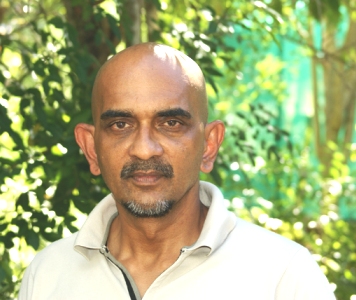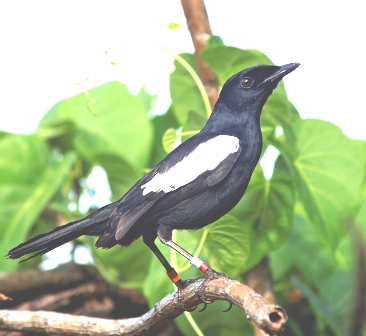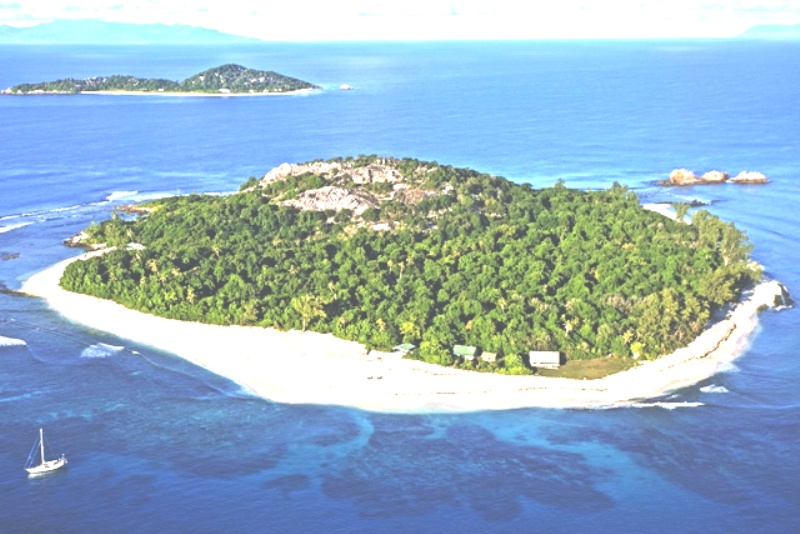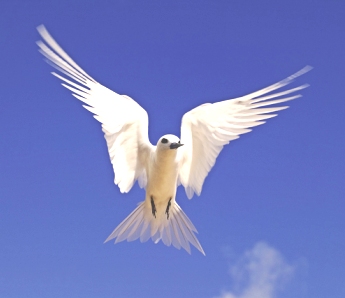Seychelles “island that belongs to birds” is barometer of health of IO |28 July 2014
Cousin Island Special Reserve, known worldwide as “the island that belongs to birds’ is living to its billing. 
It is teeming with birds again. Well, the nesting season is here again and thousands upon thousands of seabirds are flapping all over the island. It is a seabird celebration of Tropical Shearwater, White Terns, Bridled Terns, lesser Noddies and Brown Noddies which are all nesting in Cousin. At this time of the year visitors are strongly advised not to come with their Sunday best outfits. Wide-brimmed hats at this time of the year are recommended as birds poop on shampooed hair or shiny pates is a surety. Guano is literally everywhere.
The white-tailed tropic bird and the wedge-tailed shearwater are also enjoying rare family moments at this time in Cousin which is managed by the environmental non-profit Nature Seychelles. This is not just a special time for the birds but also for the watchful bird monitoring and census group the Seychelles Seabird Group (SSG) which consists of specialised staff of ornithologists, marine scientists and volunteers drawn from Nature Seychelles, Cousine Island and Fregate Island Private. Last year the census found that 150,000 birds were breeding at Cousin during this season.
Cousin Island which lies 2 kilometres off Seychelles’ second main island of Praslin is a 27 hectare Seychelles reserve.
Alex Underwood, who started his career in conservation on this very Reserve more than 10 years ago and is now back as deputy chief warden, has always had fond memories of the island and particularly the nesting season.
“The birds know Cousin Island is their home for this period of time. It is actually their colony,” said Underwood.
“The island is free of predators and the birds are almost care free knowing they are safe and there’s plentiful of fish at easy reach to feed the young ones once they hatch.”
Every nook and cranny of the island is literally occupied. White-tailed tropic birds are nesting on the grounds, the tree branches are where you find white terns, the burrows found in the hilly region in the island is a favourite haunt for the shear waters.
Brown noddies are a bit selective as they occupy the coconut trees and open rocky areas while Bridled terns and Sooty terns squat in open scrub areas.
For the last 15 years Nature Seychelles has been conducting customary census of the feathery inhabitants on Cousin.
An enthusiastic Underwood says that the census is not just limited to the collection of scientific data.
“The census on bird is very important for the country,” said Underwood.
He added: “These birds are the one major barometer that accurately tells you how healthy the entire western Indian Ocean is at any given time. If the ocean is unhealthy you can be sure these birds will be the first to be affected.”
Mr Underwood’s sentiments are supported by the recently released SSG report edited by April Burt, Nature Seychelles’ Conservation Manager. “These birds’ species can be considered the most prolific of seabird species in the western Indian Ocean and particularly in the inner granitic Seychelles,” the SSG census report writes.
“They can act as both valuable indicators of oceanic conditions as well as indicators of human induced impacts such as nesting habitat disturbance pollution or overfishing.”
|
|
 |
According to Nirmal Shah, Nature Seychelles’ chief executive, Cousin’s history as an avian sanctuary dates back to 1968 when it was purchased by one of the world’s largest nature conservation charities, the International Council for Bird Protection (today Birdlife International). The main purpose of this purchase was to save the Seychelles Warbler. At the time Cousin was a coconut plantation and there were only 26 warblers surviving in the island’s original habitat of mangroves.
“The coconut plantation in Cousin was cut and the original habitat of the island was allowed to thrive. It is this restoration that saw the warblers flourishing,” said Mr Shah.
“The warblers’ numbers multiplied very fast from 26 to over 300 within a short time. Today the warbler is resident in five other islands in Seychelles.”
In saving the warbler the success had rubbed off on another species – the Seychelles Magpie Robin – which was first translocated to Cousin from Fregate island to prove that populations of critically endangered species could be established on other islands. Today Cousin is actively engaged in reducing its carbon footprint and three years ago became the world’s first nature reserve to achieve carbon neutral status.
Other than being a home for over 300,000 birds Cousin, recognised as an important nesting site in the western Indian Ocean for Hawksbill turtles, is now home to moorhens, dragonflies, endemic lizards, hermit crabs and giant sea crabs.
Mr Shah concludes: “Bird conservation on Cousin proved that we can save highly endangered species in our own lifetime, amid doom and gloom in the conservation world. That is how birds became ‘owners’ of Cousin.”

By: Wanjohi Kabukuru (Seychelles News Agency)





